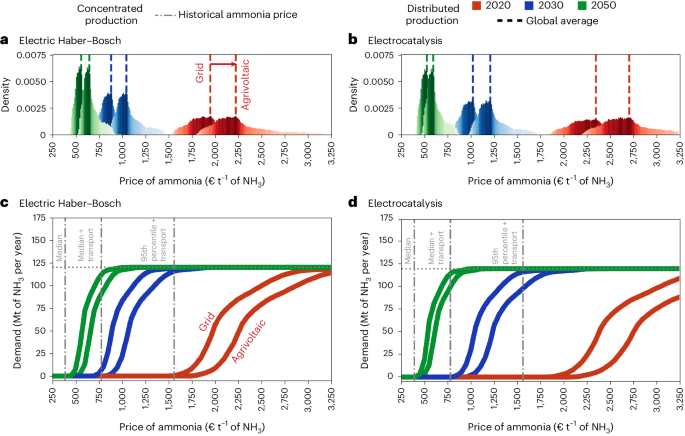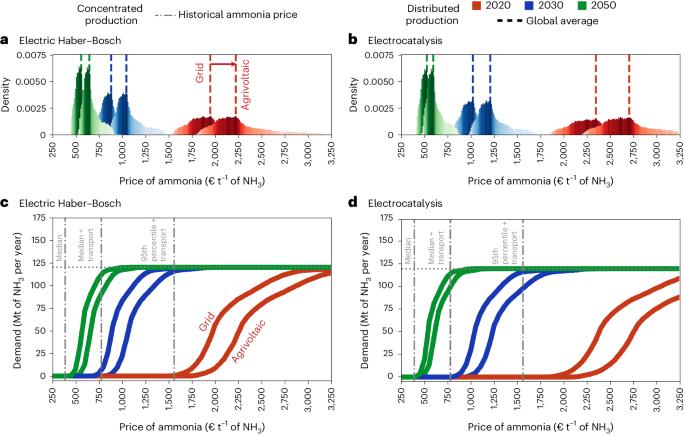Cost-competitive decentralized ammonia fertilizer production can increase food security
IF 23.6
Q1 FOOD SCIENCE & TECHNOLOGY
引用次数: 0
Abstract
The current centralized configuration of the ammonia industry makes the production of nitrogen fertilizers susceptible to the volatility of fossil fuel prices and involves complex supply chains with long-distance transport costs. An alternative consists of on-site decentralized ammonia production using small modular technologies, such as electric Haber–Bosch or electrocatalytic reduction. Here we evaluate the cost-competitiveness of producing low-carbon ammonia at the farm scale, from a solar agrivoltaic system, or using electricity from the grid, within a novel global fertilizer industry. Projected costs for decentralized ammonia production are compared with historical market prices from centralized production. We find that the cost-competitiveness of decentralized production relies on transport costs and supply chain disruptions. Taking both factors into account, decentralized production could achieve cost-competitiveness for up to 96% of the global ammonia demand by 2030. These results show the potential of decentralized ammonia technologies in revolutionizing the fertilizer industry, particularly in regions facing food insecurity. The production of ammonia-based nitrogen fertilizers, key to food production, is highly concentrated and therefore susceptible to price volatility and supply chain disruptions. This study examines the cost-competitiveness of a decentralized ammonia industry with low-carbon ammonia production using small modular technologies, such as electric Haber–Bosch or electrocatalytic reduction.


具有成本竞争力的分散式氨肥生产可增强粮食安全
氨工业目前的集中式结构使氮肥生产容易受到化石燃料价格波动的影响,并涉及复杂的供应链和长途运输成本。另一种替代方法是采用小型模块化技术,如哈伯-博施电法或电催化还原法,进行现场分散式合成氨生产。在此,我们评估了在全球新型化肥工业中,利用太阳能光伏系统或电网电力在农场规模生产低碳氨的成本竞争力。我们将分散式氨生产的预计成本与集中式生产的历史市场价格进行了比较。我们发现,分散式生产的成本竞争力取决于运输成本和供应链中断。将这两个因素考虑在内,到 2030 年,分散式生产可实现高达 96% 的全球氨需求的成本竞争力。这些结果表明,分散式合成氨技术具有彻底改变化肥行业的潜力,尤其是在面临粮食不安全的地区。
本文章由计算机程序翻译,如有差异,请以英文原文为准。
求助全文
约1分钟内获得全文
求助全文

 求助内容:
求助内容: 应助结果提醒方式:
应助结果提醒方式:


